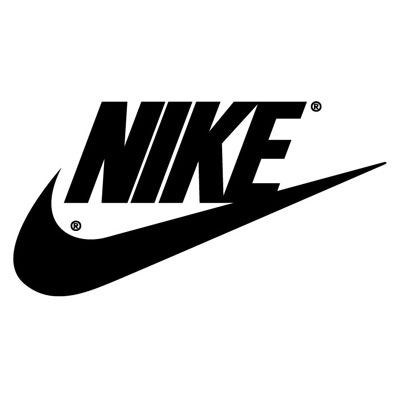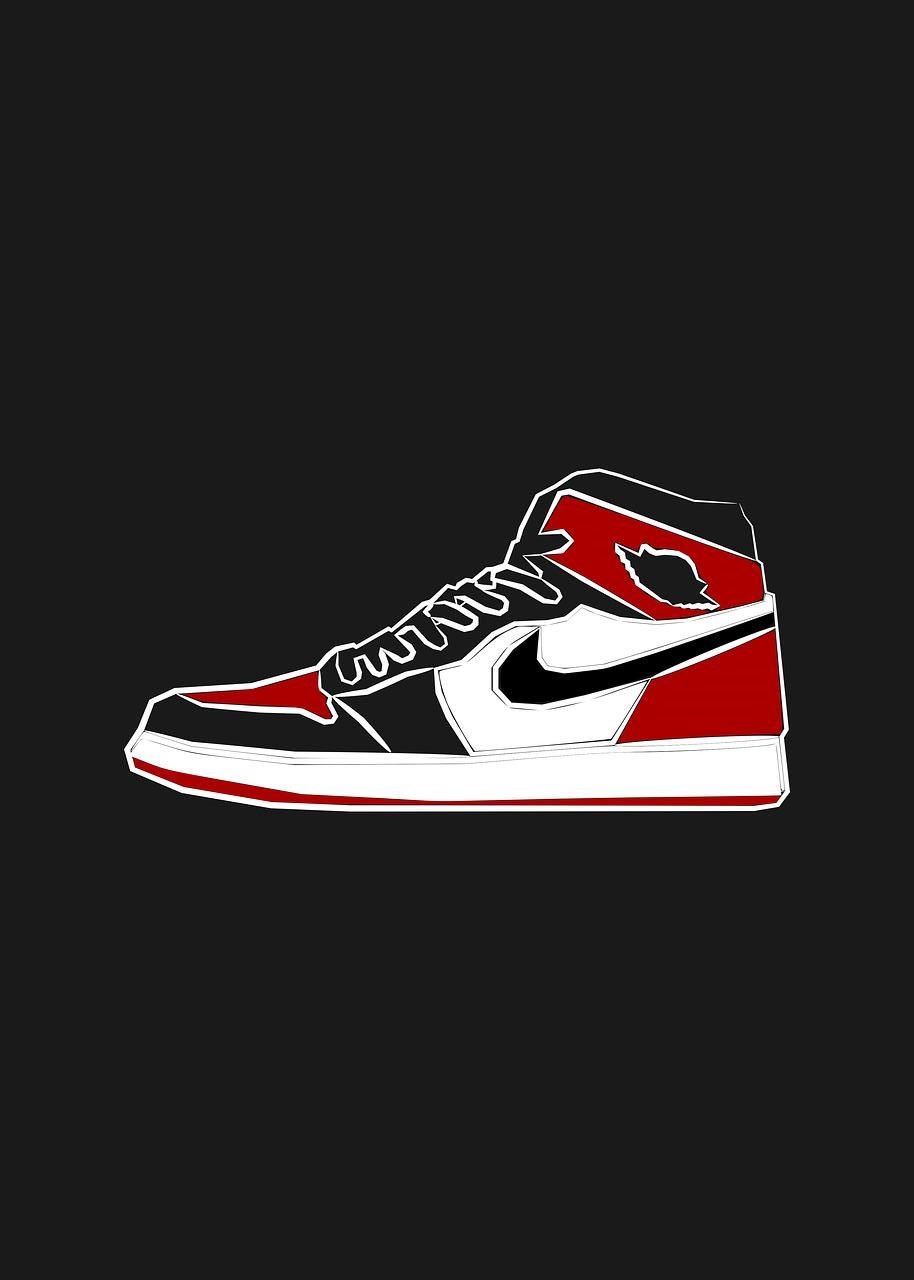 Nike Logohttps://commons.wikimedia.org/wiki/File:Old_Nike_logo.jpgFor many generations, countless stories have been shared and passed on, from humorous to painful. No matter what emotions these tales stimulate, they all contain moral value. By sharing our experiences, we can influence society, broaden our perspectives, and honor heroes. There is an abundant number of heroic stories spanning a variety of topics, but within them lies a common theme: heroes may save lives; however, heroism comes in a variety of forms. One can be a hero by doing an act that is much smaller and yet equally significant. A true hero is a person who is willing to sacrifice themselves for the benefit of others and risk their lives to assist them. While they may face challenges, heroes are courageous and persistent, continually striving towards their goals, unfazed by failures and setbacks. It is important to tell the stories of heroes because they can empower us and turn us into heroes ourselves.
Nike Logohttps://commons.wikimedia.org/wiki/File:Old_Nike_logo.jpgFor many generations, countless stories have been shared and passed on, from humorous to painful. No matter what emotions these tales stimulate, they all contain moral value. By sharing our experiences, we can influence society, broaden our perspectives, and honor heroes. There is an abundant number of heroic stories spanning a variety of topics, but within them lies a common theme: heroes may save lives; however, heroism comes in a variety of forms. One can be a hero by doing an act that is much smaller and yet equally significant. A true hero is a person who is willing to sacrifice themselves for the benefit of others and risk their lives to assist them. While they may face challenges, heroes are courageous and persistent, continually striving towards their goals, unfazed by failures and setbacks. It is important to tell the stories of heroes because they can empower us and turn us into heroes ourselves.
 Stanford Universityhttps://commons.wikimedia.org/wiki/File:Stanford_Cardinal_logo.svgOne modern-day hero we should learn from is Philip Knight. Born on February 24, 1938 in Portland, Oregon (Post), Knight attended the University of Oregon and was a mid-distance runner on the track team. His coach, Bill Bowerman, used him as a ‘guinea pig’ to test different materials and designs for running shoes. This sparked his personal interest in athletic sneakers (“How Phil Knight’s ‘Crazy Idea’ Conquers the Sporting World” 1:40-2:23). After receiving a bachelor’s degree at Oregon University, Knight decided to go to Stanford to get his master’s degree (“Phil Knight”). During his time at Stanford, Phil took an entrepreneurship class and wrote a research paper on shoes: “Being a runner, I knew something about running shoes. Being a business buff, I knew that Japanese cameras had made deep cuts into the camera market… I argued in my paper that Japanese running shoes might do the same thing. The idea interested me, then inspired me, then captivated me. It seemed so obvious, so simple, so potentially huge… I’d never really stopped thinking about that paper” (Knight 12). Evidently, Knight was extremely passionate about this ‘crazy idea'; thus, he decided to pursue his dreams after graduating from Stanford. He came from humble beginnings, borrowing $50 from his dad and selling Japanese running shoes out of the trunk of his car (Luna). Eventually, his success led him to create Nike, one of his greatest impacts on society. Philip Knight’s empowering tale of struggling during his quest to achieve his dream and acquiring heroic characteristics that allowed him to succeed and accomplish many feats amidst countless obstacles illustrates the theme that anyone can achieve their goals and transform their community for the better.
Stanford Universityhttps://commons.wikimedia.org/wiki/File:Stanford_Cardinal_logo.svgOne modern-day hero we should learn from is Philip Knight. Born on February 24, 1938 in Portland, Oregon (Post), Knight attended the University of Oregon and was a mid-distance runner on the track team. His coach, Bill Bowerman, used him as a ‘guinea pig’ to test different materials and designs for running shoes. This sparked his personal interest in athletic sneakers (“How Phil Knight’s ‘Crazy Idea’ Conquers the Sporting World” 1:40-2:23). After receiving a bachelor’s degree at Oregon University, Knight decided to go to Stanford to get his master’s degree (“Phil Knight”). During his time at Stanford, Phil took an entrepreneurship class and wrote a research paper on shoes: “Being a runner, I knew something about running shoes. Being a business buff, I knew that Japanese cameras had made deep cuts into the camera market… I argued in my paper that Japanese running shoes might do the same thing. The idea interested me, then inspired me, then captivated me. It seemed so obvious, so simple, so potentially huge… I’d never really stopped thinking about that paper” (Knight 12). Evidently, Knight was extremely passionate about this ‘crazy idea'; thus, he decided to pursue his dreams after graduating from Stanford. He came from humble beginnings, borrowing $50 from his dad and selling Japanese running shoes out of the trunk of his car (Luna). Eventually, his success led him to create Nike, one of his greatest impacts on society. Philip Knight’s empowering tale of struggling during his quest to achieve his dream and acquiring heroic characteristics that allowed him to succeed and accomplish many feats amidst countless obstacles illustrates the theme that anyone can achieve their goals and transform their community for the better.
Although Phil Knight encountered numerous challenges throughout his life, he did not let those obstacles inhibit him from fulfilling his dreams and making an immense societal impact. For example, while Knight was still selling Onitsuka’s shoes using his company Blue Ribbon Sports, he was forced to work two jobs at once: “I was putting in six days a week at Price Waterhouse, spending early mornings and late night and all weekends and vacations at Blue Ribbon… But it wasn’t possible. Blue Ribbon simply couldn’t support me. So I decided to compromise, find a different day job, one that would pay my bills but require fewer hours, leaving me more time for my passion” (Knight 151). Phil explains his struggle to continue his dream while making a living; working tirelessly and incessantly, spending every minute at work. Reluctantly, he switched jobs in order to invest more time into his passion. It is evident that Philip faced a serious problem just trying to make a living. He adapted to his challenge and was even willing to work two jobs instead of giving up on his dream. His persistence amidst his obstacles allows him to bring a huge “boon” to the community. In this way, Knight struggled to survive while still pursuing his plan, which exemplifies how he withstood challenges and still worked towards his goal. Knight was uninfluenced by his struggles, and he had a positive mindset, which ultimately allowed him to accomplish his dream. Additionally, his fight against the American Selling Price customs ruling also strengthens this claim. The new company had to pay $25 million for customs, and the total revenue for that year was $24 million. In order to lower the U.S. Customs duties Nike had to pay, Philip tried to lobby politicians and even produced a television ad to gain public support. Nike would have collapsed if the duties were not changed. He faced strong opposition, but Knight still persisted and tried to lower the amount his company needed to pay (Knight 251-253). Philip attempted many ways to obtain public support so that the duties would be changed, and he knew that this was an important fight to win. Knight came across many impediments when trying to fulfill his ‘crazy idea'; however, his persistence enabled him to transform his community. After this issue was solved and Nike was popularized, people made accusations of ‘sweatshop labor’ in their factories. Human rights organizations even began to call for boycotts (“How Phil Knight’s ‘Crazy Idea’ Conquers the Sporting World” 5:57-6:12). Knight claimed that news reporters “... simply searched until they found a worker with complaints and conditions, and they used that worker to vilify us, and only us, knowing our name would generate maximum publicity” (Knight 267). Clearly, Nike was targeted and reporters aimed to harm it by provoking negative public attention. As another barrier to Nike’s success, this had a huge impact and may have led to the rejection of this brand. However, because of Philip Knight’s determination and hard work, the company was able to silence the opposition. He improved conditions after public complaints; thus, people stopped boycotting Nike and Knight was able to develop that manufacturer into a huge shoe seller that is now impacting the whole world through footwear and athletic clothing. The incidents outlined above epitomize how anyone can make a change, even if struggles like these arise.
With his heroic characteristics, Philip Knight demonstrates how he achieved his goal even though he faced innumerable difficulties throughout his journey. From the start, in 1962, Knight knew that he would need to go to Japan if he hoped to sell Onitsuka’s running shoes. However, at that time, 90% of Americans had not been on an airplane, and his father’s predecessor had passed away in a plane crash (Knight 14-15). Phil’s family must have been unnerved by his plans, as they were probably worried about plane safety. At that time, planes had not been popularized, so his journey must have seemed extremely risky. However, Phil Knight still decided to go on his trip because he was brave and courageous. These are two traits that a hero should possess. On other occasions, after all his experiences founding Nike, Knight advised, “I have occasionally met promising young people who insist they are not going to ask for help along the way. They want to do it themselves. It is hard enough out there: Get all the help you can. Getting help is just a part of that life-long search for wisdom” (Knight 269). His personal story led him to conclude that getting help is something everyone should do because life is already exceptionally taxing and demanding. Philip’s humility is also another important aspect of his character and was very impactful in his life. If it weren’t for this, he would not have received much assistance and would not have been prepared for his very first interview with Onitsuka. Furthermore, Knight was extremely confident and passionate when working towards his goal: “His team had a cause, and they believed they would succeed… ‘We knew we could fail, we just didn’t think we would,’ Knight said. ‘We loved what we were doing, and we loved each other’” (Stevenson). He and his coworkers strove towards success, not worrying about failure, and enjoying their work. They toiled away with confidence and passion, attributes that heroes must have when trying to achieve something. To conclude, Phil Knight’s heroic traits: bravery, courage, humility, confidence, and passion, depict how he is a deserving hero; therefore, his story is important as it can be used to turn other people into heroes as well.
Using his heroic qualities, Knight overcame the struggles he faced and accomplished many things that made a tremendous impact on his community. To start off, he successfully attained his goal and made his ‘crazy idea’ come true. Philip founded Nike, a shoemaking company that is a popular brand. He has turned it into a $91 billion company with stores scattered all across the globe (Stevenson). Even though he struggled in the beginning, Knight still made his idea come to life and transformed the world. Phil developed an immense company that distributes shoes worldwide and continues to expand. This represents a long-term impact on society. His founding of Nike also led to two other significant inventions. First of all, after the ‘sweatshop labor’ complaints, the manufacturer improved its conditions by inventing a water-based bonding agent that gives off no fumes and would eliminate 97% of the fumes that could potentially cause cancer, in a room where shoe uppers and soles are bonded (Dubasik and Flores). According to "Shoe Dog: A Memoir by the Creator of Nike: Young Readers Edition," Nike then shared this with its competitors; therefore, it probably reduced toxic pollution in factories all over the world, improving the lives of many workers, not just the employees at its factories. Knight’s creation of Nike led to complaints about working conditions, which then led him to invent something that could save lives. Because of these triumphs, the Nike Foundation was also able to create a company called the Girl Effect, an association devoted to helping girls. It hopes to prevent the continuation of generational cycles of poverty, by investing tens of millions of dollars in its global campaign, whether for education, ending child marriage, building safe spaces, inspiring messages, or other ways to change their lives (Knight 267-268). The development of Nike has led to a better society, not just renovated shoes. Girls are getting assistance and global issues are being solved all because of Philip’s ‘crazy idea.’ These three accolades are just a few examples that exhibit the positive impacts that Philip Knight has made, thus making him a hero, especially one that must be remembered, in order to change others.
 Nike Shoehttps://pixabay.com/illustrations/sneakers-nike-shoes-casual-fashion-4305395/In conclusion, by conquering problems using his attributes to accomplish amazing things, Philip Knight’s life reveals how one can change their surroundings in great ways. He dealt with multiple issues throughout his quest but worked exceedingly hard to fulfill his ‘crazy idea.’ His features assisted him in attaining his goals and bringing a ‘boon’ to the world, and his story motivates others to also become heroes. Personally, Philip’s history encourages me to work hard and strive towards my dreams even when others doubt me and have little faith in what I’m doing. His narrative shows me that I can do anything if I set my heart to it, even if it takes a long time and requires overcoming many difficulties. Hence, heroic stories are significant as they inspire us to also become heroes, and remind us of the things we are able to do, no matter what background we come from.
Nike Shoehttps://pixabay.com/illustrations/sneakers-nike-shoes-casual-fashion-4305395/In conclusion, by conquering problems using his attributes to accomplish amazing things, Philip Knight’s life reveals how one can change their surroundings in great ways. He dealt with multiple issues throughout his quest but worked exceedingly hard to fulfill his ‘crazy idea.’ His features assisted him in attaining his goals and bringing a ‘boon’ to the world, and his story motivates others to also become heroes. Personally, Philip’s history encourages me to work hard and strive towards my dreams even when others doubt me and have little faith in what I’m doing. His narrative shows me that I can do anything if I set my heart to it, even if it takes a long time and requires overcoming many difficulties. Hence, heroic stories are significant as they inspire us to also become heroes, and remind us of the things we are able to do, no matter what background we come from.
Page created on 2/12/2020 3:01:38 AM
Last edited 2/16/2020 7:13:57 AM
Works Cited
Dubasik, Zac, and Gerald Flores. “18 Things We Learned About Nike by Reading Phil Knight's Memoir.” Sole Collector, 28 Apr. 2016, solecollector.com/news/2016/04/nike-facts-phil-knight-memoir/.
“How Phil Knight’s ‘Crazy Idea’ Conquers the Sporting World.” YouTube, uploaded by CBS Sunday Morning, 24 Apr. 2016, www.youtube.com/watch?v=dxWJTo-0eyk.
Knight, Philip H. Shoe Dog: A Memoir by the Creator of Nike: Young Readers Edition. Simon & Schuster Books for Young Readers, 2017.
Luna, Jenny. “Philip Knight: ‘For an Entrepreneur, Every Day Is a Crisis.’” Stanford Graduate School of Business, 15 Sept. 2017, www.gsb.stanford.edu/insights/philip-knight-entrepreneur-every-day-crisis.
“Phil Knight.” Contemporary Authors Online, Gale, 2017. Gale In Context: Biography, https://link.gale.com/apps/doc/H1000323237/BIC?u=powa9245&sid=BIC&xid=db15e586. Accessed 4 Dec. 2019.
Post, Colin. “Phil Knight.” Phil Knight, July 2010, p. 1. EBSCOhost, search.ebscohost.com/login.aspx?direct=true&db=b6h&AN=36662075&site=brc-live.
Stevenson, Abigail. “Nike Co-Founder Phil Knight: I Was Told I Wouldn't Make It. Here's How I Did It Anyways.” CNBC Make It, CNBC, 4 Aug. 2016, www.cnbc.com/2016/08/04/nike-founder-phil-knight-on-success-and-failure.html.
Works Consulted
Dubasik, Zac, and Gerald Flores. “18 Things We Learned About Nike by Reading Phil Knight's Memoir.” Sole Collector, 28 Apr. 2016, solecollector.com/news/2016/04/nike-facts-phil-knight-memoir/.
Elliott, Stuart. “Nike Harnesses ‘Girl Effect’ Again.” The New York Times, 11 Nov. 2010, www.nytimes.com/2010/11/11/giving/11VIDEO.html.
“How Phil Knight’s ‘Crazy Idea’ Conquers the Sporting World.” YouTube, uploaded by CBS Sunday Morning, 24 Apr. 2016, www.youtube.com/watch?v=dxWJTo-0eyk.
Knight, Philip H. Shoe Dog: A Memoir by the Creator of Nike: Young Readers Edition. Simon & Schuster Books for Young Readers, 2017.
Luna, Jenny. “Philip Knight: ‘For an Entrepreneur, Every Day Is a Crisis.’” Stanford Graduate School of Business, 15 Sept. 2017, www.gsb.stanford.edu/insights/philip-knight-entrepreneur-every-day-crisis.
“Nike.” Gale In Context Online Collection, Gale, 2013. Gale In Context: High School, https://link.gale.com/apps/doc/EJ2181500325/SUIC?u=powa9245&sid=SUIC&xid=0aa5ed98. Accessed 5 Dec. 2019.
“Phil Knight.” Contemporary Authors Online, Gale, 2017. Gale In Context: Biography, https://link.gale.com/apps/doc/H1000323237/BIC?u=powa9245&sid=BIC&xid=db15e586. Accessed 4 Dec. 2019.
“Phil Knight.” Encyclopedia of World Biography Online, vol. 19, Gale, 1999. Gale In Context: High School, https://link.gale.com/apps/doc/K1631007281/SUIC?u=powa9245&sid=SUIC&xid=d562a6be. Accessed 5 Dec. 2019.
Post, Colin. “Phil Knight.” Phil Knight, July 2010, p. 1. EBSCOhost, search.ebscohost.com/login.aspx?direct=true&db=b6h&AN=36662075&site=brc-live.
“Stanford Graduate School of Business Graduation Remarks by Phil Knight, MBA ’62.” YouTube, uploaded by Stanford Graduate School of Business, 7 Jul. 2014, www.youtube.com/watch?v=nRN9FwWQY8w&feature=emb_title.
Stevenson, Abigail. “Nike Co-Founder Phil Knight: I Was Told I Wouldn't Make It. Here's How I Did It Anyways.” CNBC Make It, CNBC, 4 Aug. 2016, www.cnbc.com/2016/08/04/nike-founder-phil-knight-on-success-and-failure.html.
